the place where Paleontology and Paleoanthropology meets Philately
Poland
Fossils, reconstruction of dinosaurs and other
prehistoric animals, paleontologists, contributors to Paleontology
science, Charles Darwin on stamps, postal stationeries and postmarks of Poland
| << previous country | back to index | next country >> |
Contents:
- Country overview
- Philately of Poland
- Official stamps of Poland related to Paleontology
- Other stamps of Poland to consider
- Commemorative postmarks of Poland related to Paleontology
- Other postmarks of Poland to consider
- Postal stationeries of Poland related to Paleontology
- Special Covers of Poland related to Paleontology
- References
- Acknowledgements
Poland, officially the Republic of Poland, is a country in Central Europe, situated between the Baltic Sea in the north and two mountain ranges in the south. Bordered by Germany to the west; the Czech Republic and Slovakia to the south; Ukraine and Belarus to the east; and the Baltic Sea, Kaliningrad Oblast (a Russian exclave) and Lithuania to the north.
The total area of Poland is 312,679 square kilometres, a population of over 38.5 million. The capital and largest city is Warsaw. [R1]
Dinosaur fossils are found in Poland – primarily in the south (Silesia and Świętokrzyskie Mountains). This is because the northern parts of Poland were covered by marine waters during much of the Mesozoic Era. The most common fossil evidence for dinosaurs in Poland come from the many footprints left behind by these reptiles walking across wet sand.
The first Polish stamp was issued for the Congress Kingdom on 1 January 1860. [R2]
The Polish dinosaur issues of 1965 and 1966 were widely sought after by collectors.
The designs are based on pictures by Zdenek Burian, a Czech painter and book illustrator, whose work during a remarkable career spanning five decades, played a central role in the development of paleontological reconstructions.
These issues were partly inspired by the active paleontological research that Polish Paleontologists were doing in collaboration with other Paleontologists in Eastern Europe, the Soviet Union and most importantly in Mongolia. The popularity of these stamps encouraged other countries in the Soviet Block to follow with issues of their own focusing on prehistoric animals.
The Polish set from 1965 and the set of San Marino, issued only 3 months later, prehistoric life likely were the first issues to really make paleophilately a theme that collectors would collect.
Official stamps of Poland related to Paleontology: fossils, reconstruction of dinosaurs and other prehistoric animals, paleontologists, Charles Darwin
| 10.12.1959 "Famous personalities" [1] | 05.03.1965 "Prehistoric Animals" | 05.03.1966 "Prehistoric Animals" |
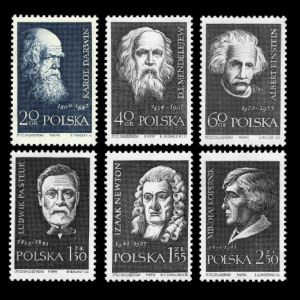
|
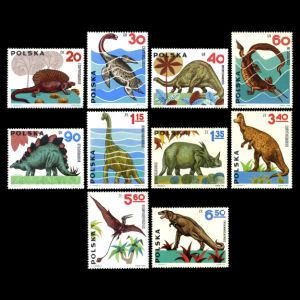
|
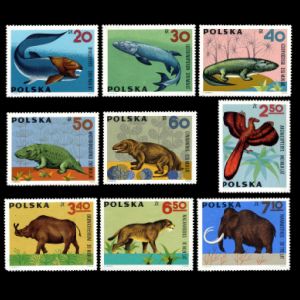
|
| 03.09.1976 "100 years since death of Aleksander Czekanowski" [2] | 22.05.1980 "Polish scientific Expeditions" [3] | 17.04.1990 "Roman Kozlowski" |
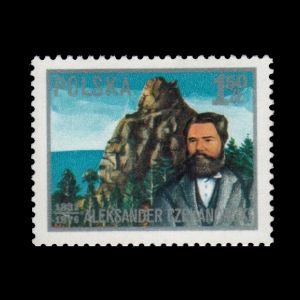 |
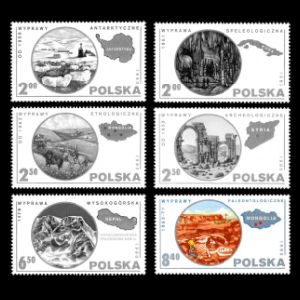 |
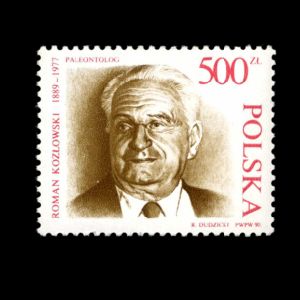 |
| 29.01.1993 "Amber route" [4] | 23.03.2000 "Prehistoric animals -Dinosaurs" | 22.02.2002 "Poles in the World" |
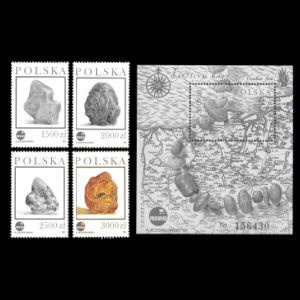
|
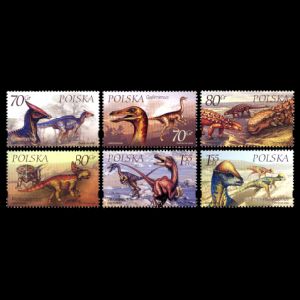
|
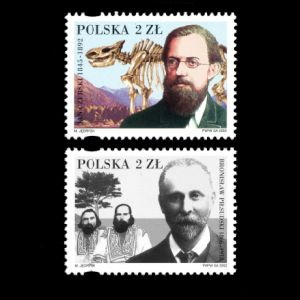
|
| 03.12.2004 "Cosmic History of the Earth" | 25.11.2020 "Dinosaurs" | 23.05.2022 "Poles in Siberia - Aleksander Czekanowski" [2] |
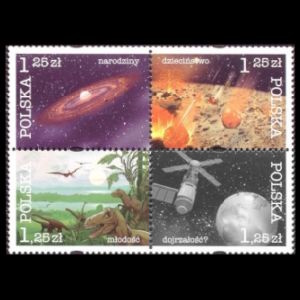 |
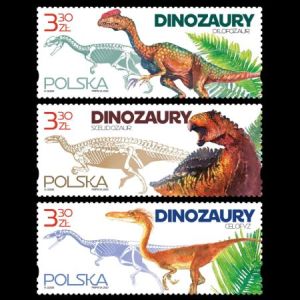 |
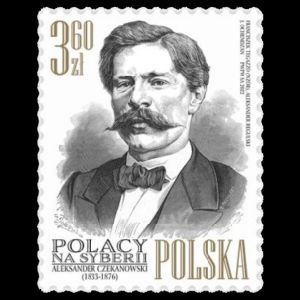 |
Notes:
[1] Charles Darwin depicted on stamps of 20Gr.

Year 1959 was both the 150th anniversary of the birth of Charles Robert Darwin, and the 100th anniversary of the publication of his most famous work "On the Origin of Species by Means of Natural Selection".
Many countries issued stamps and postmarks to commemorate the 200th anniversary of Charles Darwin’s birth and 150th anniversary of the publication of “On the Origin of Species by Means of Natural Selection”. Only a handful of countries issued stamps in Charles Darwin’s honor for the 150th anniversary of his birth and 100th anniversary of the publication of his most significant work. The five countries that released stamps in 1958-1959 were all communist countries and included GDR (in 1958), USSR, Czechoslovakia, Romania and Poland.
[2] Aleksander Piotr Czekanowski (12 February 1833 – 30 October 1876) was a Polish geologist, paleontologist and explorer of Siberia.
After graduating in 1857 he returned to Kiev where he started working at Siemens and Halske, which was at the time engaged in the construction of a telegraph line from Russia to India.
The work was involved frequent trips which gave him the opportunity to conduct scientific research. In addition to his main work, he also systematised the paleontological collections of the University of Kiev, Ukraine.
For more details, please click here
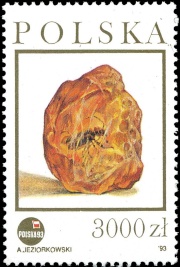
|
| Insect in amber on stamp of Poland 1993 MiNr.: 3429, Scott: 3139 |
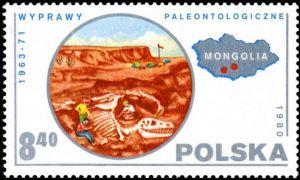
|
| Tarbosaur excavation on stamp of Poland 1980 MiNr.: 2691, Scott: 2395 |
[3] In 1980 Post of Poland issued a set of 6 stamps of "Polish scientific Expeditions". One of these stamps, shows the excavation of a Tarbosaurus by the joint Polish-Mongolian Paleontological Expedition to the Gobi Desert between 1967 and 1971.
Under the agreement signed in Ulan Bator in May 1969 between the Polish and Mongolian' Academics of Sciences, large Polish-Mongolian expeditions were to be organized in 1970 and 1971 to continue the work done in 1963-1965. They were to work in the same regions as in previous years, that is in Bayn Dzak and in the Nemegt Basin and surrounding area.
During the two month stay in Nemegt the many dinosaur specimens from the Upper Nemegt Beds were discovered. Among them two incomplete skeletons of Tarbosaurus sp. and several fragments of the skeletons of the same species.
[4] Roman Kozlowski (February 1, 1889 – May 2, 1977) was a Polish paleontologist, best known for his work on graptolites (colonial animals known chiefly as fossils from the Middle Cambrian to Carboniferous-aged rocks). He was the founder of Polish palaeontology and the Institute of Palaeozoology PAS (now the Institute of Paleobiology PAS) in 1952. [R5]
[5] One of the stamps from "Amber routes" set, with face value of 3000zl shows insect in amber.
Such amber is found in large quantities in Poland and Lithuania. Lithuania has also commemorated the amber deposits on their own stamps in 2009.
Other stamps of Poland to consider: contributors to Paleontology
| 30.11.1973 "Polish Scientists and Explorers" [A1] | 03.07.2002 "The 200th Anniversary of the Birth of Ignacego Domeyko" [A1] | |
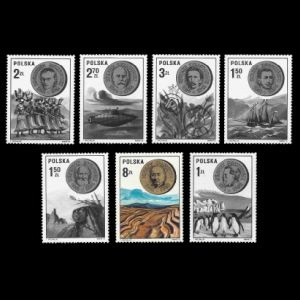 |
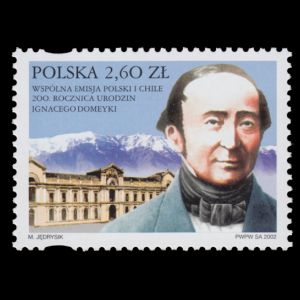 |
|
Notes:
[A1] Ignacy Domeyko (31 July 1802 – 23 January 1889), was born in Novohrudak (now the Karelichy District of Belarus) on 31 July 1802.
He died 23 January 1889 in Santiago, Chile. He was a Polish geologist, mineralogist and educator. He lived for some 50 years in Chile and made major contributions to the study of the Country’s geography, geology, and mineralogy.
Domeyko was not particularly interested in paleontology but found fossils during his work. He occasionally sent these fossils to French Naturalists for study. [R4]
For details please go here.
Domeyko shown on a stamp with the face vaue of 8zl. from the stamps set "Polish Scientists and Explorers" from 1973 and on the stamp from 2002. The stamp from 2002 is the joint issue with Chile.
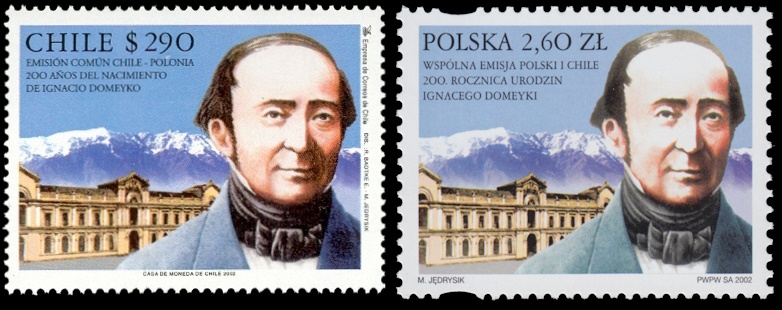
Commemorative postmarks of Poland related to Paleontology: fossils, dinosaurs and other prehistoric animals, paleontologists
| 05.03.1965 "Prehistoric Animals" [FDC] | 05.03.1966 "Prehistoric Animals" [FDC] | 19.06.1970 "50th anniversary of Geologic Institute in Warsaw" [Sp] |
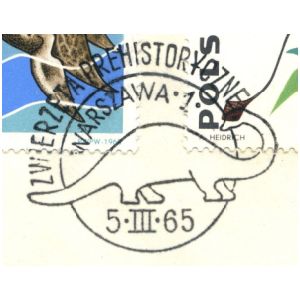 |
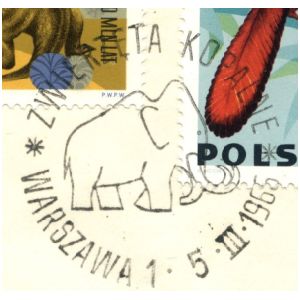 |
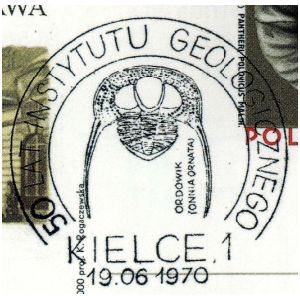 |
| 24.09.1978 "50th anniversary of Polish Geological Society" | 27.05.1984 "Meeting of philatelic club Kopasyny" | 17.04.1990 "Roman Kozlowski" [FDC] |
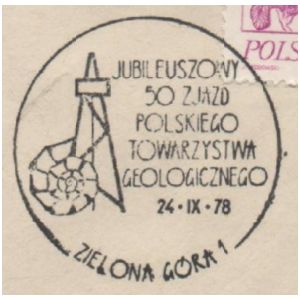 |
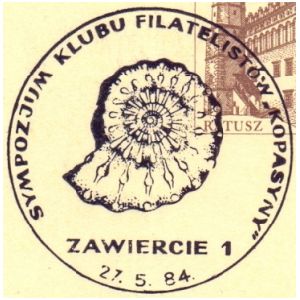 |
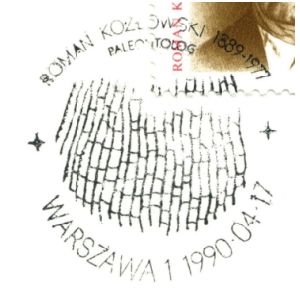 |
| 25.06.1992 "100 years since death of Jan Czerski" [PM1] | 14.05.1993 "Stamps show in Poznan" | 23.03.2000 "Prehistoric animals -Dinosaurs" [FDC] |
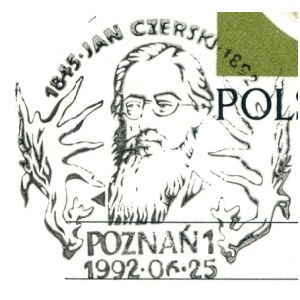 |
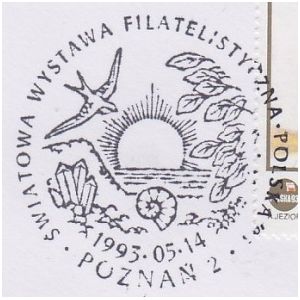 |
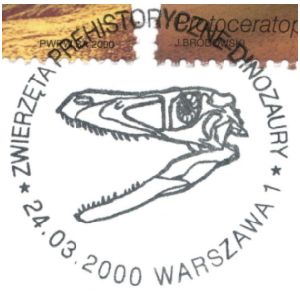 |
| 25.11.2020 "Dinosaurs" [FDC] | ||
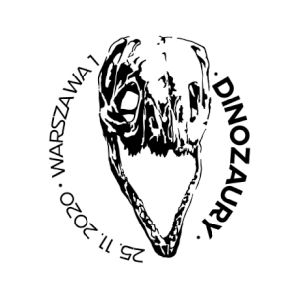 |
|
|
Notes:
[PM1]
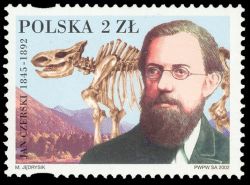
|
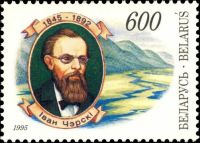
|
| Jan Czerski on stamp of Poland 2002 with Coelodonta skeleton on the background, MiNr.: 3953, Scott: 3621 | Jan Czerski on stamp of Belarus 1995d, MiNr.: 92, Scott: 113 |
To date (2021) Jan Czerski is commemorated on two stamps only - Poland 2002 (with Coelodonta skeleton on the background) and Belarus 1995 (see on the right)
Some postmarks of Poland to consider
| 16.061970 "50th anniversary of Geologic Institute in Warsaw" | ||
 |
|
|
Postal stationery of Poland related to Paleontology
| 1970 "50th anniversary of Geologic Institute in Warsaw" | 2007 "The Kraków-Częstochowa Upland, also known as the Polish Jurassic Highland" [PS1] | |
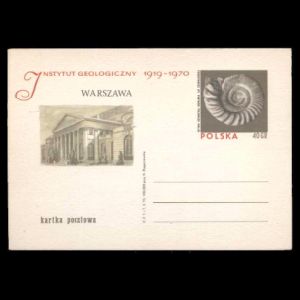 |
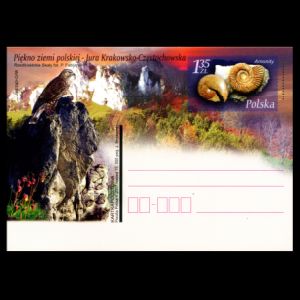 |
|
Notes:
[PS1] The Kraków-Częstochowa Upland, also known as the Polish Jurassic Highland or Polish Jura (Polish: Jura Krakowsko-Częstochowska), is part of the Jurassic System of south–central Poland, stretching between the cities of Kraków, Częstochowa and Wieluń. The Polish Jura borders the Lesser Polish Upland to the north and east, the foothills of the Western Carpathians to the south and Silesian Upland to the west. The Polish Jura consists of a hilly landscape with Jurassic limestone rocks, cliffs, valleys and vast limestone formations, featuring some 220 caves. The relief of the upland developed since the Paleogene, under climatic conditions changing considerably. Its main component is a peneplain, crowned by monadnocks, rocky masses that resisted erosion, generated as hard rock on Late Jurassic buildup surrounded by less resistant bedded limestone of the same age. The Polish Jura is visited by roughly 400,000 visitors a year. Part of it belongs to the Ojców National Park, the smallest of Poland's twenty national parks, ranking among the most attractive recreational areas of the country. [R8]
Special Covers of Poland related to Paleontology
| 1995 Cover of the Institute of Paleobiology in Warsaw [COV1] | ||
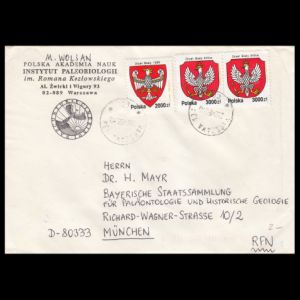 |
|
|
Notes:
[COV1] The Institute of Paleobiology in Warsaw
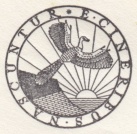
|
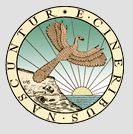
|
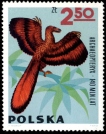
|
| Logo of the Institute of Paleobiology in Warsaw on a cover from Poland 1995 | Logo of the Institute of Paleobiology in Warsaw, from its home page [R5] | Archaeopteryx on stamp of Poland 1966 |
The Institute placed an Archaeopteryx on its logo - very similar to the reconstruction of famous Czech Paleoartist Zdenek Burian, as shown on Polish stamp from 1966.
Since its start, the Institute has conducted biologically-oriented research on ancient life. Descriptions of fossil biota are accompanied by comparative studies of their Recent counterparts.
The scope of its research covers vertebrates, invertebrates and microfossils of various origins.
The Institute has organized and participated in scientific expeditions to various areas of the world (Mongolia, Spitsbergen, Antarctica). A scene of one of such expedition is commemorated on Polish stamp in 1980 and shows the excavation of the dinosaur Tarbosaurus bataar (a relative of the Tyrannosaurus rex) by Polish paleontologists in Mongolia and shows excavation of Tarbosaurus Bataar dinosaur (relative of Tyrannosaurus Rex) by Polish paleontologist in Mongolia.
Many fossils which discovered and brought to Poland by the stuff of the Institute can be seen in its museum - the Museum of Evolution of the Institute of Paleobiology [R5]
References:
- [R1] Poland: Wikipedia, WikiTravel, FlagCounter.
- [R2] Postal History and Philately of Poland:
Wikipedia,
Links to official website of the Post Authority, stamp catalog and a list of new stamps of Poland are here - [R3] Aleksander Piotr Czekanowski: encyclopedia.com
- [R4] Ignacy Domeyko: Wikipedia
- [R5] The Institute of Paleobiology in Warsaw: Official website of the Institute, the Museum of Evolution of the Institute of Paleobiology.
- [R6] Roman Kozłowski: The Institute of Paleobiology in Warsaw, Wikipedia, (Polish version is much more detailed as the English one).
- [R7] Jan Czerski: Wikipedia
- [R8] The Kraków-Częstochowa Upland: Wikipedia
Acknowledge:
- Many thanks to Dr. Peter Voice from Department of Geological and Environmental Sciences, Western Michigan University, for the draft page review and his very valuable comments.
- Many thanks to fellow collectors Mr. Maxim Romashchenko from Canada for his help finding an information about Poland's postmarks related to Paleontology.
| << previous country | back to index | next country >> |